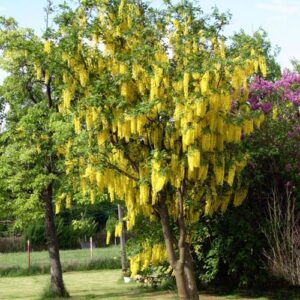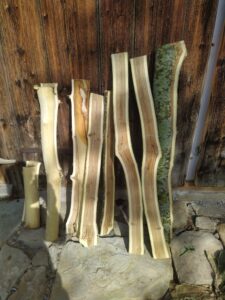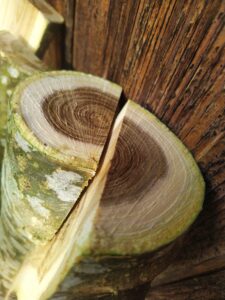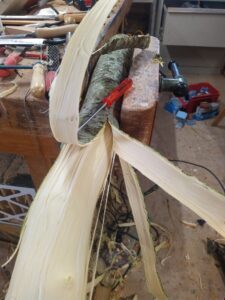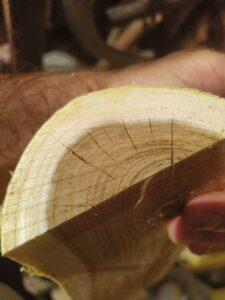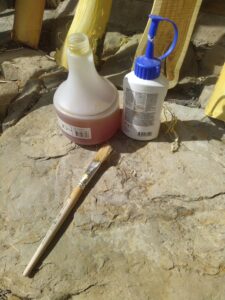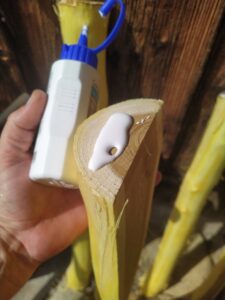You cannot buy good bowwood at amazon. Good bowwood is a steady journey – it needs a bit of luck and open eyes.
Today I was lucky to score a few pieces of Laburnum (Golden Chain). Laburnum beneath Yew is probably the best bowwod that grows around here. It was already used in the middle ages to make bows. Burgundians often used that wood for their hunting bows. Most famous example is the so called “Hohenaschau-Bogen”. A replica of this bow sure is on my bucket list.
Still its very hard to find long and straight and knotfree enough piece to make a bow. However the straighter sections at least often have enough length to produce nice billets that later can be spliced together in the handle section to make a full bow. Their snakeyness will be perfectly mirrored in the two limbs which result in a good string alignement for the bow.
Similar to yew the Laburnum has a bright white sapwood that can be used as the back of the bow. Similar to Yew the Sapwood has good tension strength while being softer and more sensitive than the heartwood.
Finding a suitable piece is one thing. If this is achieved you need to remove the bark and seal the wood with no delay. If you do not do that on Laburnum the sapwood will quickly rot greyish under the bark, get brittle and and loose all the tension strength – please dont ask why I know that.
On the contrary yew is one of the very few woods that needs to be dried with the bark on.
Once the pieces are cut and the bark is removed, the Sapwood and the ends need to be sealed quickly – otherwise the wood will check in no time. I do use shellac to seal the sapwood and white wood glue for the ends. The good thing about shellac is, that its easy removable later with only a little alcohol when you finally make your bow.
After everything is sealed, the wood is ready for storage and seasoning. It needs to season at least one year.
As you now see, as a bowyer you have to work even before the work. Collecting and preparing your wood is essential and time consuming.

